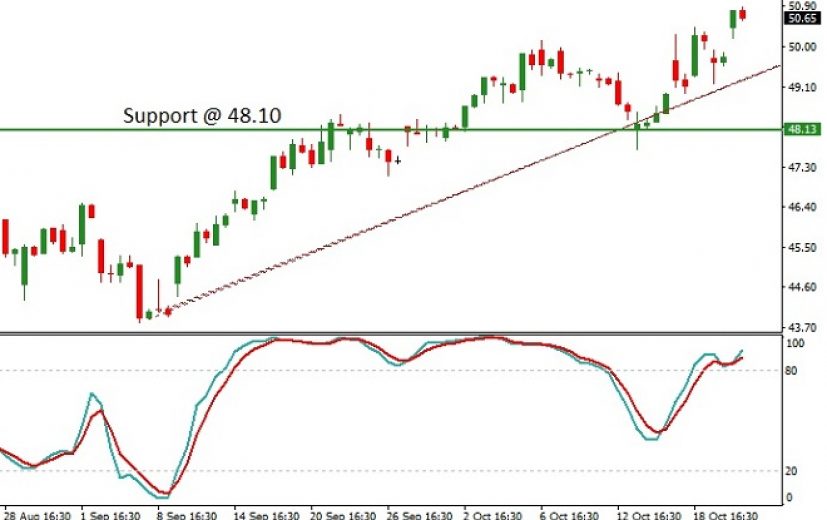 Aided by a 9% growth in wealth management revenue, Morgan Stanley (NYSE: MS) reported fiscal 2017 third-quarter results that crushed analysts’ estimates.
Aided by a 9% growth in wealth management revenue, Morgan Stanley (NYSE: MS) reported fiscal 2017 third-quarter results that crushed analysts’ estimates.
The stock, which closed at $50.68 on Friday, is up nearly 17% since January and 45% after the US presidential election. Similar to other investment banks, Morgan Stanley recorded a 21% decline in fixed-income revenue.
Still, we anticipate the stock of Morgan Stanley to remain bullish in the days ahead due to the facts presented underneath.
During the September quarter, Morgan Stanley recorded net revenues of $9.197 billion, an increase of 3% from $8.909 billion in the prior year’s similar quarter. Net income in Q3 2017 grew 6% to $1.688 billion, or $0.93 per share, from $1.518 billion, or $0.81 per share, in the corresponding quarter of fiscal 2016. The Thomson Reuters Consensus estimate called for an earnings of $0.81 per share on revenues of $9.015 billion.
Morgan Stanley
During the quarter, Institutional Securities revenue dipped to $4.376 billion, from $4.553 billion in the same period last year. However, it was more than offset by Wealth Management revenues of $4.220 billion, up from $3.881 billion in the year-ago period. Investment Management revenues increased marginally to $675 million, from $552 million last year.
Over the past few years, the bank’s CEO James Gorman has steered the company away from trading to asset management and advisory services. In this regard, the company acquired Smith Barney, the brokerage arm of Citigroup. That transformation seems to have paid off in the third-quarter. The Wealth Management revenue now accounts for nearly half of the firm’s total revenue. The pre-tax income generated by Wealth Management division increased 24% y-o-y to $1.119 billion in Q3 2017.
The return on equity stood at 9.6% in the third-quarter. For the first nine months of 2017, the return on equity is 9.8%, well ahead of the 9% targeted by Gorman.
During the quarter, assets on which the firm receives management fees crossed $1 trillion, which translates to about 44% of the firm’s total assets. Morgan Stanley’s fixed-income division recorded a 21% decline in revenue on y-o-y basis. However, it still managed to clear the $1 billion target set out by Gorman.
At the end of September 2017, Morgan Stanley’s CET1 and CET1 risk-based capital ratios under Standardized Approach transitional provisions were approximately 16.9% and 19.2%, respectively. Thus, strong third-quarter results, less dependence on trading revenue, increase in revenue from advisory services, and impressive CET1 ratio is expected to keep the stock in a short-term uptrend.
Technically, the stock is in an uptrend as indicated by the ascending trend line. The stochastic oscillator is also in the bullish zone. Thus, we forecast a rally in the stock price. On the higher side, we expect the stock to face resistance at 53 levels.
In order to gain from the analysis, we might pick a call option from a suitable binary broker. The option should be active for one week. Further, the stock should be trading near $50 in the NYSE.





